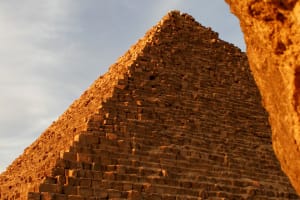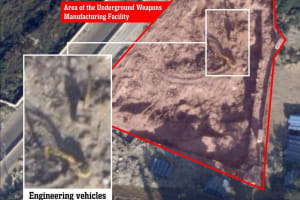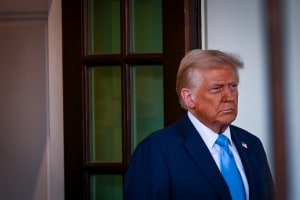Jerusalem Day Flag March draws crowds and controversy, passes without major incidents
There were scattered incidents of racism and violence
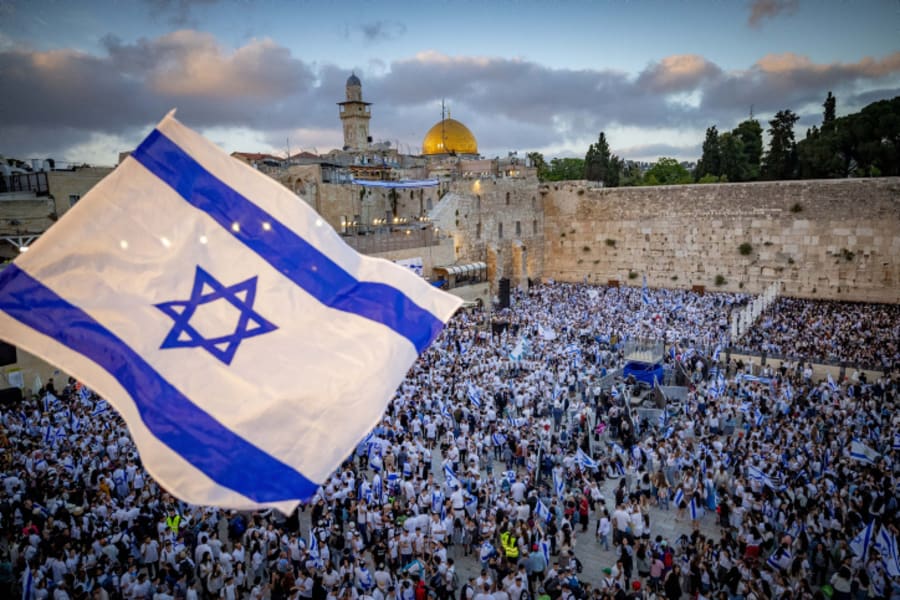
Some 50,000 people took part in Israel’s annual Jerusalem Day Flag March on Thursday evening to celebrate the reunification of the western and eastern parts of the city following Israel’s dramatic victory in the 1967 Six-Day War.
The flag parade traditionally goes through the Old City to the Western Wall in a festive act of Jewish freedom to visit their holy and historical sites once again. However, over the last few years, the march has been marred by racial incitement and violence by far-right Jewish participants, often religious Zionist youth.
Ahead of the event, approximately 3,200 Israel Police, Border Police and security personnel were deployed around the city to help prevent crowding and violence.
Despite the security measures, the police said they arrested 10 people even before the march officially began at 4 p.m. Several others were arrested or detained when fights broke out between Jewish youth and Palestinians in the Old City ahead of the parade, according to the police.
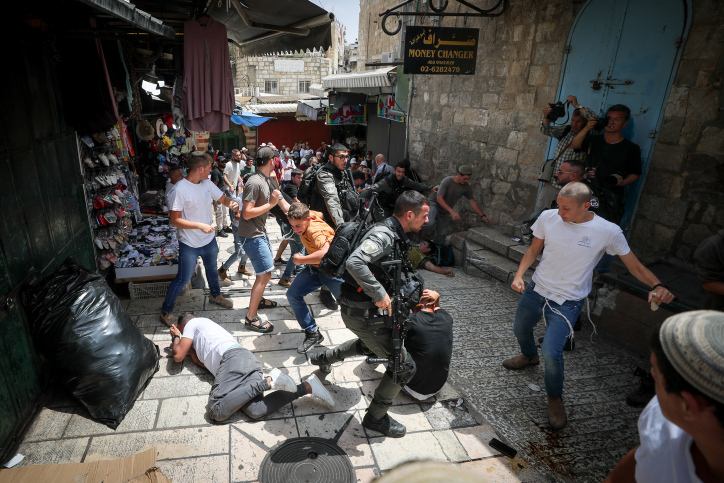
During the march itself, groups of religious Zionist youth could be heard shouting statements like, “May your village burn,” and “Death to terrorists,” while waving flags of the ultra-nationalist group, Lehava.
Lehava, which means “flame” in Hebrew is also an acronym in Hebrew for “Prevention of Assimilation in the Holy Land” The group opposes intermarriage, and has called for removing all Arabs and Christians from the land of Israel. The group’s founder, Bentzi Gopstein, was questioned by Israeli police after he spoke in support of burning churches in 2015, referring to them as places of “idol worship.”
Israeli National Security Minister Itamar Ben Gvir has defended Lehava members in court as a lawyer and is a very popular figure in the group, which has been characterized by some as a Jewish supremacist organization and has outwardly opposed any Christian presence in Israel.
This year, as in previous years, a group called Tag Meir organized an alternative parade called the “Flower March.” The group, which focuses on coexistence between Jews and Arabs, paraded through the Old City while distributing flowers to residents in the Muslim, Christian and Armenian Quarters.
The group also called for the Jerusalem Flag March route to be changed, arguing that going through the Muslim Quarter is unnecessary and “just increases hate and anger.”
Matan Peleg, CEO of the Zionist organization Im Tirzu, which helps organize the Flag March, disagreed.
“This city never had freedom of religion except when under Jewish sovereignty, and we want to celebrate this,” Peleg said.
Despite the potential for more serious violence, however, the Flag March passed without any major incidents.
Hamas had earlier warned Israel about crossing “red lines” during the parade, however, the group did not specify what those red lines were.
On Wednesday, a Hamas spokesperson, Mushir al-Masri, called on Palestinians to confront participants during the march.
“We ask the people of Jerusalem to mobilize the masses to confront the march of the flags in Jerusalem tomorrow,” al-Masri said.
Palestinian Islamic Jihad spokesperson Daoud Shehab also warned Israel, saying Palestinian groups would be “closely monitoring the events in Jerusalem.”
Jerusalem’s ‘Popular Youth Movement’ also called on Palestinians “to confront the settlers’ incursion and the flag march.”
The group emphasized their position by stating that Jerusalem is not a Jewish city.
“Your sovereignty over Jerusalem is nothing but an illusion. This city will only be an Islamic and Arab city and will never be a Jewish city.”
During the period of Jordanian rule, between 1949 and 1967, Jews were not allowed into the Old City to visit holy sites such as the Western Wall, synagogues, and yeshivas [schools for Talmudic study]. The Jordanians also destroyed most of the Jewish Quarter in the Old City and desecrated Jewish graveyards. Jews only gained freedom to pray at the Western Wall and visit holy sites in the Old City following its liberation in 1967.
After the parade, Israeli Prime Minister Benjamin Netanyahu stated he was not concerned by threats from terror groups.
Netanyahu made a speech during a Jerusalem Day ceremony at Ammunition Hill, stating: “Despite the threats – and I’ll tell you – because of the threats, I instructed to hold the Flag March with its many participants on the original path.”
Ammunition Hill was the site of intense fighting during the Six-Day War, and its capture was crucial in allowing Israeli forces to surround the Old City and capture it from the Jordanian army.
Israeli President Isaac Herzog also spoke at the ceremony.
“Today we celebrate the fulfillment of a 1,000-year-old Jewish dream to return to Jerusalem, a dream that has become part of the DNA of the Jewish people, who prayed and wished for "next year in Jerusalem,” Herzog said. “We, this generation that sits in Zion, have been privileged to fulfill the dream of previous generations - we are here in a united Jerusalem forever and ever.”
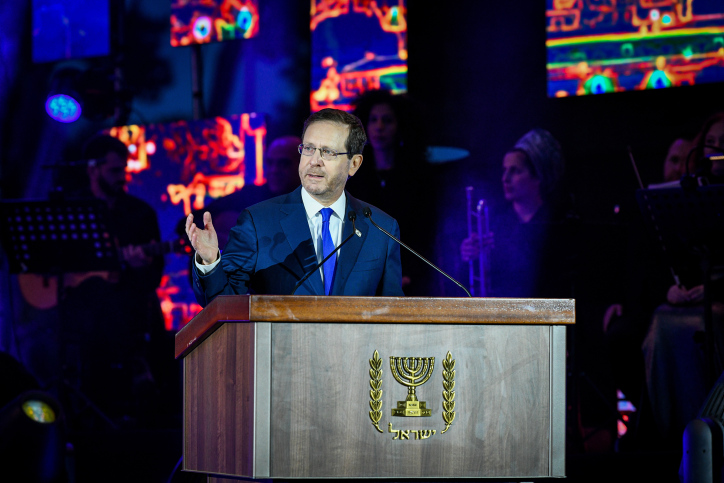
The U.S. State Department released a statement following reports of racist language at the Flag March condemning the incidents.
“We unequivocally condemn racist language of any form. Hateful chants such as ‘Death to Arabs’ are outrageous and unacceptable,” the State Department said. The statement continued, “As Israel’s close partner and friend, we call on the Israeli leadership to condemn such vile language.”
State Department spokesperson Matthew Miller posted on social media condemning the “hateful chants.”
The United States unequivocally opposes racist language of any form. We condemn the hateful chants such as “Death to Arabs” during today’s marches in Jerusalem.
— Matthew Miller (@StateDeptSpox) May 19, 2023
While no major incidents were reported in Jerusalem or the West Bank, known as biblical Judea and Samaria, thousands of Palestinians protested near the Gaza border by burning tires and waving Palestinian flags.
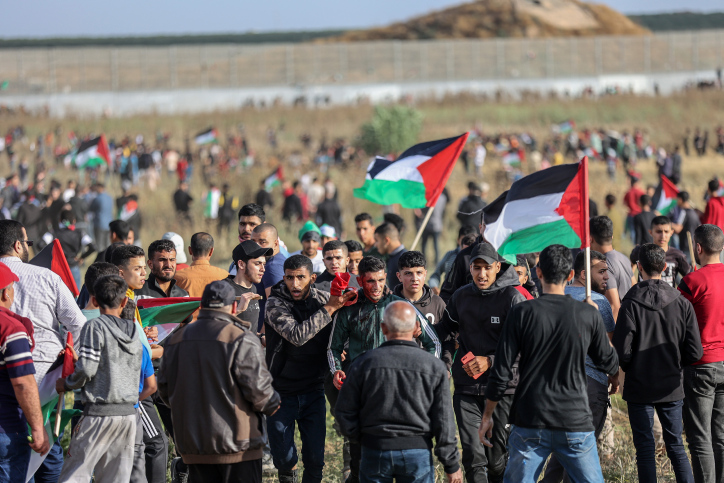

The All Israel News Staff is a team of journalists in Israel.



